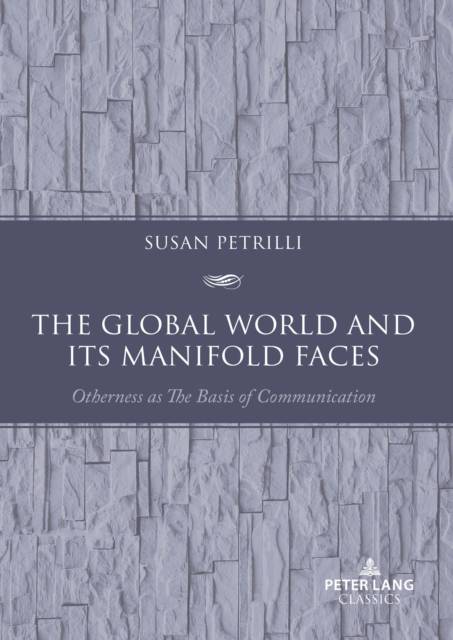
Je cadeautjes zeker op tijd in huis hebben voor de feestdagen? Kom langs in onze winkels en vind het perfecte geschenk!
- Afhalen na 1 uur in een winkel met voorraad
- Gratis thuislevering in België vanaf € 30
- Ruim aanbod met 7 miljoen producten
Je cadeautjes zeker op tijd in huis hebben voor de feestdagen? Kom langs in onze winkels en vind het perfecte geschenk!
- Afhalen na 1 uur in een winkel met voorraad
- Gratis thuislevering in België vanaf € 30
- Ruim aanbod met 7 miljoen producten
Zoeken
The Global World and Its Manifold Faces
Otherness as the Basis of Communication
Susan Petrilli
Paperback | Engels
€ 203,45
+ 406 punten
Uitvoering
Omschrijving
The Global World is a pivotal formula in present-day «Newspeak». The book's leitmotif - if it is true that the faces of today's global world are manifold - is that language opens to the other, that the word's boundaries are the multiple boundaries of the relation to others, of encounter among differences. Otherness logic is in language and life. The aim is to evidence how, contrary to implications of the newspeak order, new worlds are possible, critical linguistic consciousness is possible - a «word revolution» and pathway to social change. The method is «linguistic» and concerns the language and communication sciences. But to avoid that the limits of the latter influence our perspective on «the global world and its manifold faces», this method is located at the intersection of different scientific perspectives. As such it pertains to «philosophy of language», but in dialogue with the science of verbal and nonverbal signs, today «global semiotics», therefore it is also «semiotic». And given that how to understand «the global world» is not just a theoretical issue, but concerns how we relate to others, to differences in all their forms and aspects, the method proposed with this book is also «semioethic».
Specificaties
Betrokkenen
- Auteur(s):
- Uitgeverij:
Inhoud
- Aantal bladzijden:
- 348
- Taal:
- Engels
Eigenschappen
- Productcode (EAN):
- 9783034347280
- Verschijningsdatum:
- 28/04/2023
- Uitvoering:
- Paperback
- Formaat:
- Trade paperback (VS)
- Afmetingen:
- 152 mm x 229 mm
- Gewicht:
- 467 g

Alleen bij Standaard Boekhandel
+ 406 punten op je klantenkaart van Standaard Boekhandel
Beoordelingen
We publiceren alleen reviews die voldoen aan de voorwaarden voor reviews. Bekijk onze voorwaarden voor reviews.









